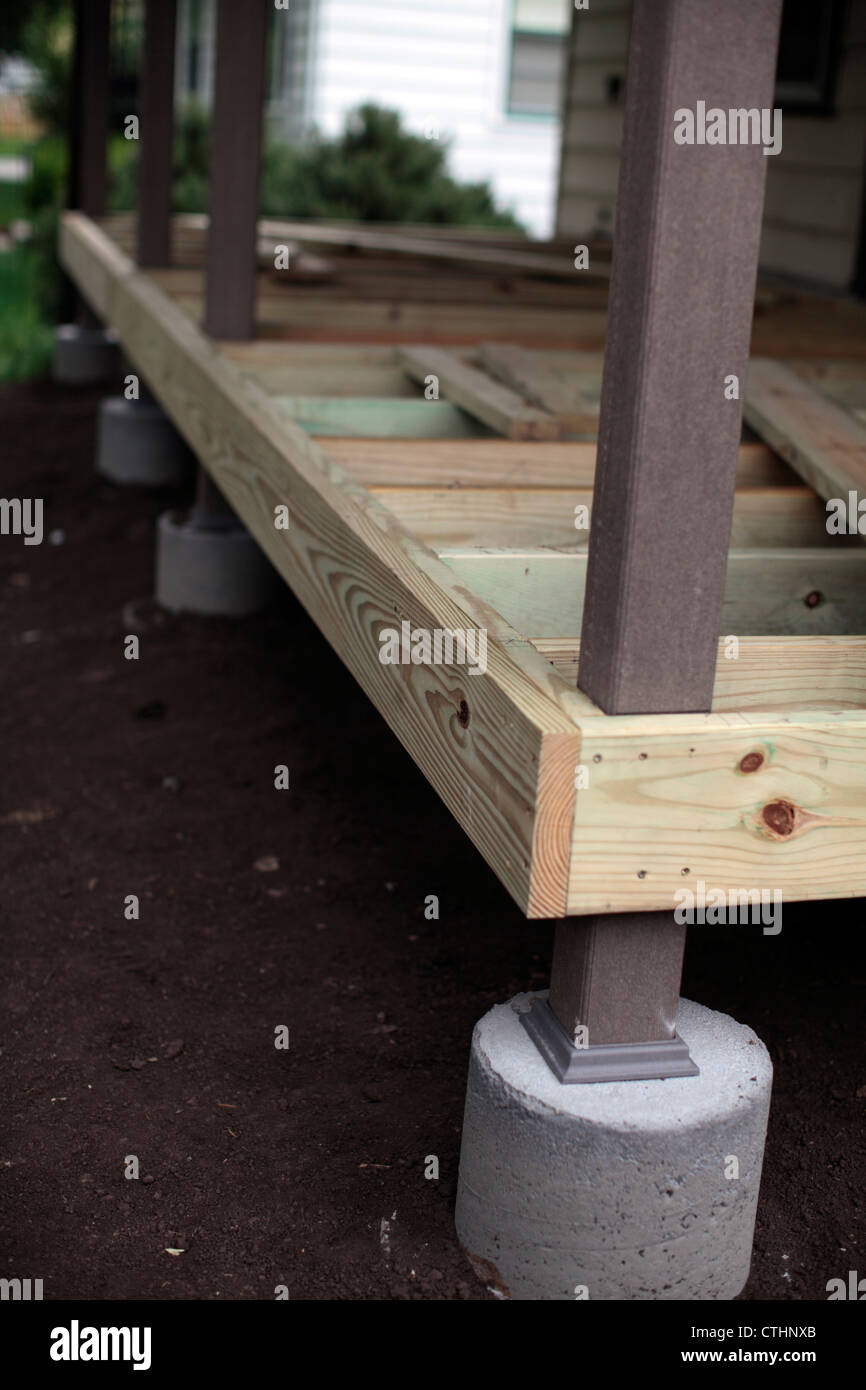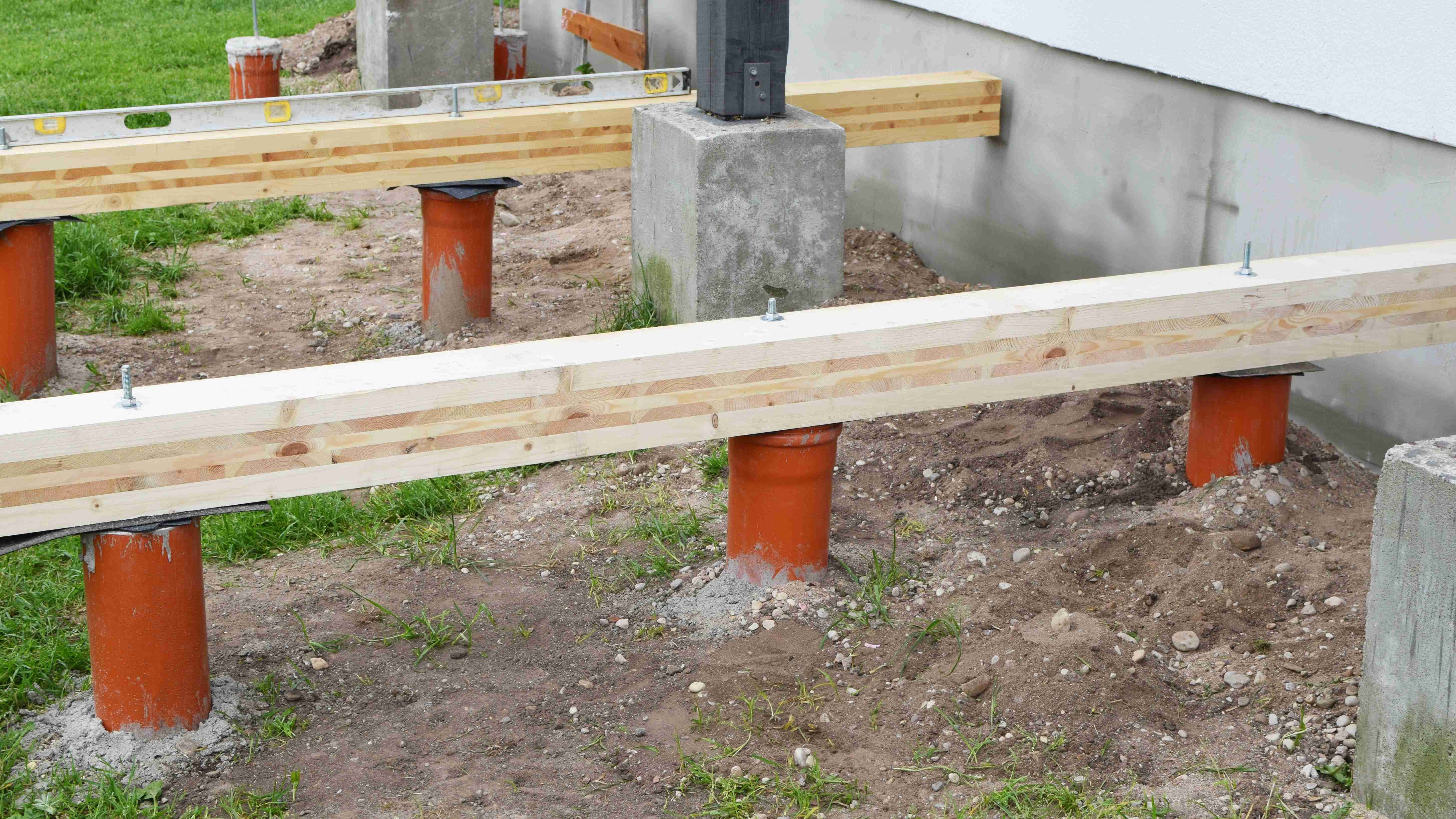Selecting the Right Deck Footings for Stability and Toughness
When it involves developing a deck, among the most crucial decisions you will certainly make is choosing the right grounds for security and sturdiness. The longevity and safety and security of your deck depend greatly on the type of grounds you pick, as they offer the essential assistance and stability to stand up to the examination of time. With a myriad of options readily available, it can be overwhelming to determine which footings are best matched for your details demands. In this discussion, we will certainly explore the different sorts of deck footings, think about the essential aspects to evaluate when deciding, and dive into the pros and disadvantages of different choices. By the end, you will have a clearer understanding of the options at hand and be better outfitted to make an informed decision for your deck job.
Kinds of Deck Footings
These footings are composed of a cylindrical hole filled with concrete, which supplies a solid foundation for the deck articles. Concrete pier footings are fairly very easy to mount and supply superb security, making them a preferred option for several deck projects.
An additional kind of ground is the helical heap ground. Helical heaps are steel shafts with helical plates attached to them. These footings are installed by screwing them right into the ground, which develops a safe structure for the deck. Helical stack footings are suitable for areas with challenging dirt conditions, as they can be set up in practically any kind of dirt. If required., they additionally allow for very easy modification and leveling of the deck.
Additionally, some building contractors choose precast concrete grounds. These footings are constructed from long lasting concrete and be available in various sizes and shapes to fit various deck styles. Precast concrete grounds are hassle-free to mount and provide a secure base for the deck structure.
Ultimately, another alternative is the post-in-anchor footing system. This sort of ground includes driving a steel anchor right into the ground and attaching it to the deck article. It uses flexibility in regards to positioning the deck articles and appropriates for decks with light-weight structures.
When picking the best sort of deck footing, it is necessary to take into consideration aspects such as soil conditions, deck lots, and local building regulations (Deck Footings). Consulting with a professional contractor or architectural designer can help make sure the proper footing is selected for a secure and safe deck
Aspects to Consider When Selecting Footings
When picking the appropriate footings for a deck, it is vital to thoroughly think about various variables such as dirt problems, deck load, and adherence to neighborhood building codes. These variables play a significant role in making certain the stability and resilience of the deck framework.
Among the key variables to consider is the dirt conditions. The type of soil on which the deck will be built identifies the kind of footings required. For instance, decks developed on loose or sandy dirts might call for much deeper grounds to supply ample support and stop settling. On the various other hand, decks improved clay or expansive soils may need footings that can accommodate the dirt's propensity to broaden and agreement.
Another essential factor is the deck load. The weight of the deck, consisting of the materials used and any kind of possible real-time tons such as furniture or celebrations, should be taken into consideration when selecting footings. The footings must be designed to birth the weight of the deck and distribute it uniformly to avoid any architectural issues or failings.
Finally, adherence to local structure codes is critical. Building regulations differ from region to region, and it is crucial to adhere to the particular needs set by the local authorities. Deck Footings. These codes make certain look at here that the deck is developed securely and satisfies the needed criteria for architectural honesty and load-bearing capability
Concrete Footings: Benefits And Drawbacks

Concrete grounds provide a number of benefits and disadvantages when utilized as the foundation for a deck. On the positive side, concrete footings supply excellent stability and sturdiness. Concrete is a inflexible and strong material that can sustain hefty tons and stand up to various weather conditions. It likewise has a long life-span, making it a dependable selection for lasting use.
One more advantage of concrete footings is their flexibility. They can be put right into various forms and sizes to fit various deck designs and arrangements. Concrete footings can be tailored to fit the certain requirements and demands of the deck structure.
However, there are also some drawbacks to making use of concrete grounds. One major drawback is the cost and labor associated with their installation. Concrete grounds call for excavation and usually require the help of hefty equipment. This can increase the total price of the deck job and may require professional help.

Helical Piers Vs. Sonotubes: Which Is Much better?
In thinking about the foundation options for a deck, the contrast in between helical piers and sonotubes is vital in establishing the superior option. Helical piers, additionally referred to as screw heaps, are steel shafts with helical plates affixed to them. They are turned right into the ground utilizing hydraulic equipment, supplying a long lasting and steady foundation for the deck. On the various other hand, sonotubes are round kinds constructed from cardboard or fiber product that are full of concrete. They are put in a hole dug right into the ground and give assistance for the deck.
When it pertains to stability and longevity, helical piers have the top hand. The helical plates on the piers produce a strong grasp with the soil, shifting or protecting against any type of movement of the deck. This is specifically helpful in areas with unsteady or shifting soil problems. Sonotubes, on the other hand, count entirely on the concrete filling up for stability, which might not provide the exact same degree of stamina and resistance.
In regards to installation, helical piers are fairly easier and faster to set up like it contrasted to sonotubes. The hydraulic machinery utilized to turn the piers right into the ground guarantees a effective and fast process. Sonotubes, on the various other hand, need excavating openings and pouring concrete, which can be labor-intensive and lengthy.
Furthermore, helical piers are a more functional alternative. If required, they can be made use of in various soil conditions and can be changed or enhanced. Sonotubes, on the other hand, may need added assistance, such as rebar, in certain soil conditions or locations with high tons needs.
Picking the Right Footings for Your Deck's Dimensions
For optimal structural integrity, it is vital to meticulously select the appropriate footings that line up with the measurements of your deck. The measurements of your deck, including its width, height, and length, play a significant role in identifying the type and dimension of grounds called for.
When picking grounds for your deck, it is very important to consider the load-bearing capacity of the soil. The weight of the deck, combined with the weight of any furniture or individuals on it, puts in a substantial pressure on the grounds (Deck Footings). It is crucial to pick grounds that can effectively sustain this weight without moving or sinking over time.
Larger decks with better dimensions call for bigger footings to supply adequate stability and assistance. The shape of the footings, whether they are square or rounded, depends on the design and layout of the deck.
Final Thought
Finally, selecting the best deck footings is crucial for making certain security and toughness. Aspects such as the sort of grounds, the deck's dimensions, and the benefits and drawbacks of various choices must be taken into consideration. Concrete grounds provide strength and long life, yet might be extra taxing and pricey to mount. Helical piers and sonotubes have their very own benefits and negative aspects. Inevitably, choosing the suitable footings for your deck's particular requirements is vital for a lasting and successful structure.
These footings are composed of a round opening filled up with concrete, which provides a solid structure for the deck posts. Concrete pier grounds are fairly very easy to install and supply excellent security, making them a popular selection for several deck projects.
Precast concrete footings are hassle-free to mount and offer a steady base for the deck structure.
It uses adaptability in terms of positioning the deck blog posts and is suitable for decks with light-weight frameworks.
Concrete grounds offer a number of Read More Here benefits and drawbacks when made use of as the structure for a deck.
Comments on “Structural Integrity Matters: Choosing the Right Deck Footings for Your Outdoor Job”